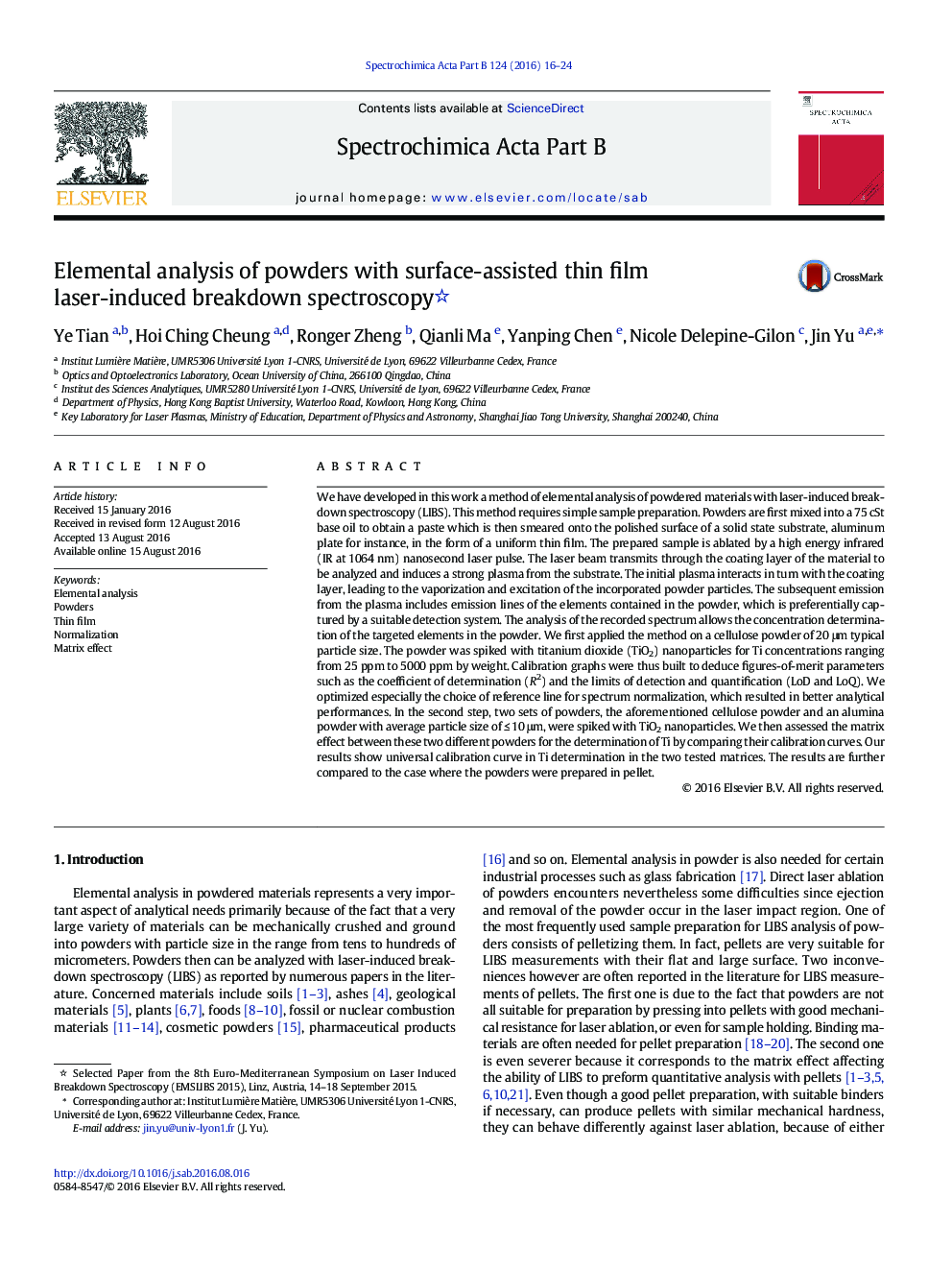| کد مقاله | کد نشریه | سال انتشار | مقاله انگلیسی | نسخه تمام متن |
|---|---|---|---|---|
| 1239412 | 1495679 | 2016 | 9 صفحه PDF | دانلود رایگان |
• Powder preparation for LIBS by mixing with base oil and by applying the obtained paste on a substrate surface
• Elemental analysis in powders with surface-assisted thin film laser-induced breakdown spectroscopy
• Spectrum normalization with reference lines of excited elements from the ambient gas
• Universal calibration curves for elemental determination in different powders
We have developed in this work a method of elemental analysis of powdered materials with laser-induced breakdown spectroscopy (LIBS). This method requires simple sample preparation. Powders are first mixed into a 75 cSt base oil to obtain a paste which is then smeared onto the polished surface of a solid state substrate, aluminum plate for instance, in the form of a uniform thin film. The prepared sample is ablated by a high energy infrared (IR at 1064 nm) nanosecond laser pulse. The laser beam transmits through the coating layer of the material to be analyzed and induces a strong plasma from the substrate. The initial plasma interacts in turn with the coating layer, leading to the vaporization and excitation of the incorporated powder particles. The subsequent emission from the plasma includes emission lines of the elements contained in the powder, which is preferentially captured by a suitable detection system. The analysis of the recorded spectrum allows the concentration determination of the targeted elements in the powder. We first applied the method on a cellulose powder of 20 μm typical particle size. The powder was spiked with titanium dioxide (TiO2) nanoparticles for Ti concentrations ranging from 25 ppm to 5000 ppm by weight. Calibration graphs were thus built to deduce figures-of-merit parameters such as the coefficient of determination (R2) and the limits of detection and quantification (LoD and LoQ). We optimized especially the choice of reference line for spectrum normalization, which resulted in better analytical performances. In the second step, two sets of powders, the aforementioned cellulose powder and an alumina powder with average particle size of ≤ 10 μm, were spiked with TiO2 nanoparticles. We then assessed the matrix effect between these two different powders for the determination of Ti by comparing their calibration curves. Our results show universal calibration curve in Ti determination in the two tested matrices. The results are further compared to the case where the powders were prepared in pellet.
Journal: Spectrochimica Acta Part B: Atomic Spectroscopy - Volume 124, 1 October 2016, Pages 16–24
